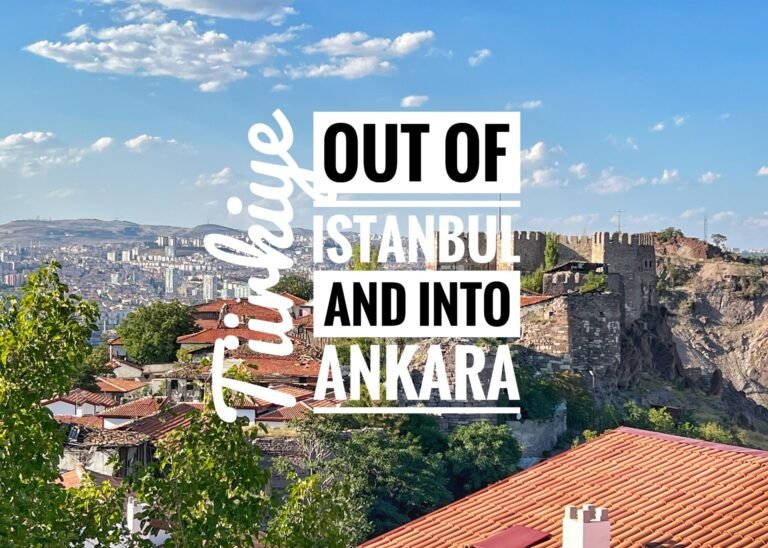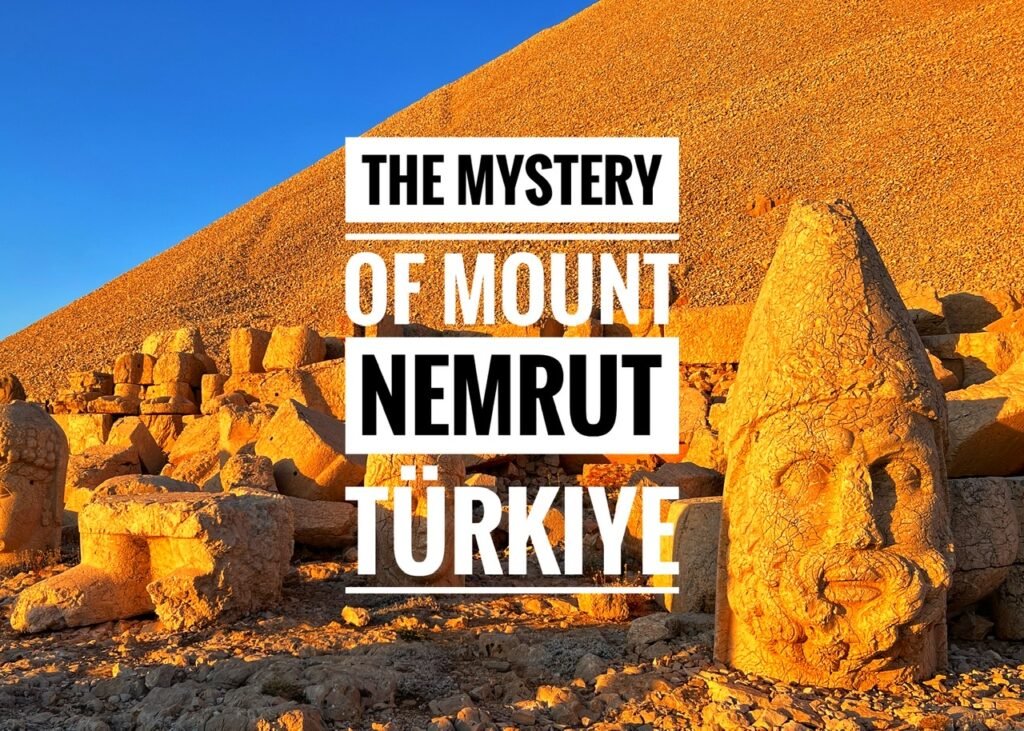
From Cappadocia, we rolled east to Kahta, which would serve as the base for our venture to the much lesser visited Turkish wonder of Mount Nemrut. We planned to take a direct overnight bus from Kayseri to Kahta but since that would involve a 13-hour wait at the bus station, with the help of a friendly bus station attendant, we pieced together an alternative going from Kayseri to Gaziantep to Adiyaman to Kahta. The nine-hour journey was mostly smooth including transiting buses which was logical and easy, especially with the help of our limited Turkish.

After 10 pm, we arrived to Kahta, the closest city to Mount Nemrut deemed a “historic rip off town” by our Lonely Planet book. We had had suspicions long before we arrived thanks to this description, as well as the VERY limited and quite crappy accommodation options we’d found online.
That is, other than the “three-star” KommageneİZ Hotel, which also had some less than sparkling reviews, but was still the winner of the bunch. Upon our arrival, the English-speaking manager was sitting outside chain smoking and çay-ing.* He had a bright button down shirt with a mound of chest hair peeping out and oozed a certain stereotype of dubious activity.
*sucking down cups of Turkish tea in quick succession.
Sure enough, at first Guido the Turk would not honor our Agoda reservations, because “they charge too little and he doesn’t work with them.” Our credit card had already been charged 23 € so he tried to act like a saint saying he’d give us a “free” room and that we’d “work it out in the morning.” Sketchy.
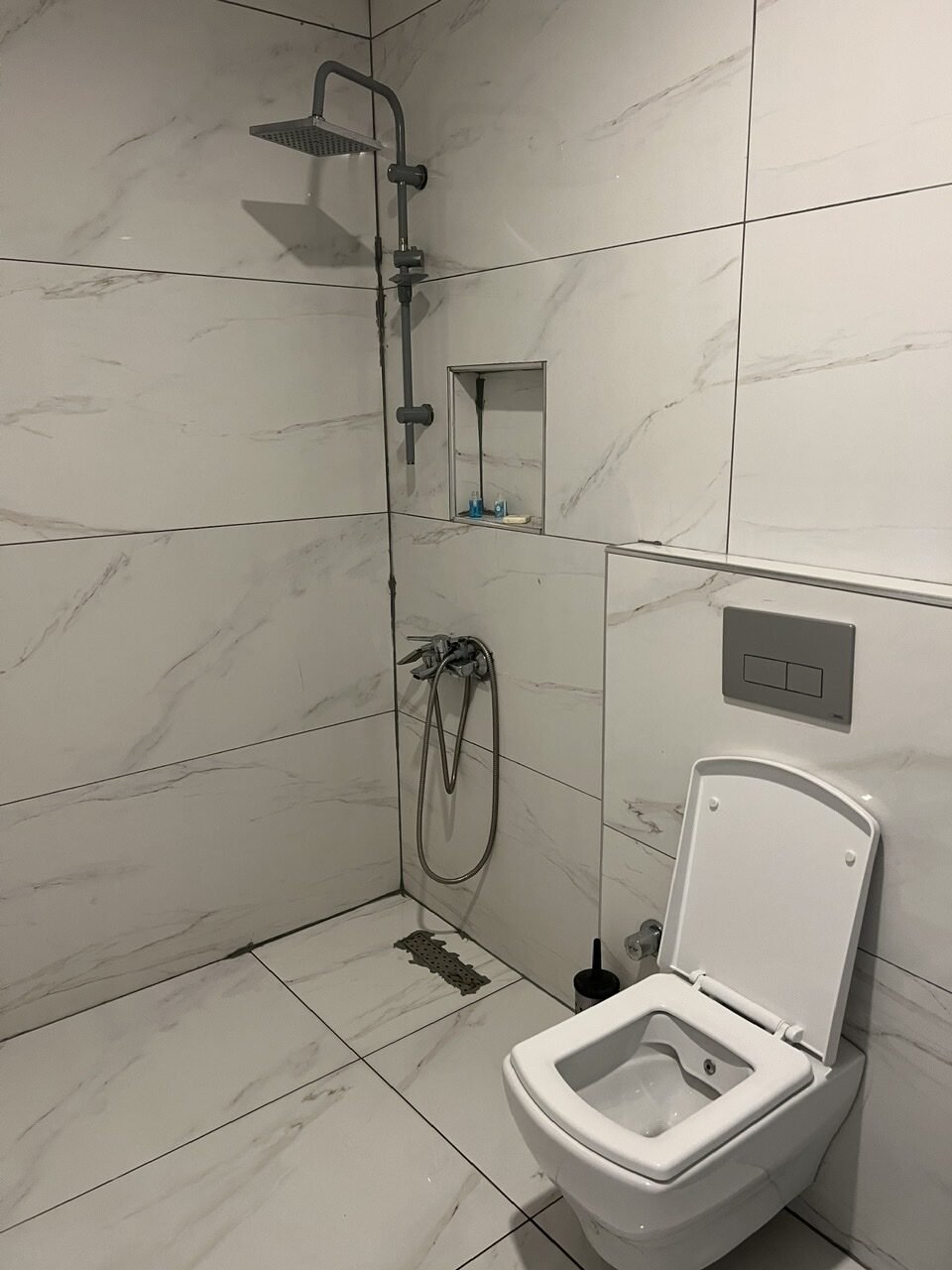
Then, they put us in a room, and made us move 15 minutes later with no explanation after we’d already started to go to bed, which was extra fun. But score! The new room featured a non functioning shower and the experience of walking in nature thanks to the dirt on the floor to coat our feet… But, blessedly the A/C worked.
The next morning, after riding an elevator undoubtedly designed for a Vegas casino or Trump Tower, undoubtedly the most fun part of our visit, Guido wanted to sell us a tour to Mount Nemrut.

We got the information and very inflated price of 65€ per person and told him we’d confirm later. We contacted a couple more tour agencies, because there were many in town, who was considerably less expensive. However, these agencies soon informed us they would not take us based on the simple fact of….where we were staying. Sketchy evolves to super sketchy.
So, ultimately we decided to book our tour with our hotel, but asked if we could do the tour without dinner for less money. Guido the Turk said, “No, it’s a very long tour and there is nothing to eat up there.” We later found out that we were conveniently going to go to HIS restaurant right near the hotel at 8:30 pm when we finally returned for an astronomical 30€ extra when we could have paid 2 € for a doner next door. The others in the group, all locals, were not seemingly part of this.
This said, we definitely do not recommend staying here or in Kahta at all. This town is seriously looking a tourism gift horse in the mouth and is suspiciously mismanaged. That said, we wish we’d stayed in neighboring Malatya. Ah well. Next time. ? At least Mount Nemrut was a site to see…

Crowning the most majestic mountain in Mesopotamia in eastern Türkiye (supposedly) lies the final resting mound of the great Greek Hellenistic King Antiochus (69–34 B.C) and one of Turkiye’s most iconic UNESCO World Heritage sites. Here you can find slightly eerie well preserved two meter heads of various Persian-Greek identities, which have been beheaded and tossed about from their colossal limestone bodies due to earthquakes and most likely, iconoclasm. (Quite a few heads have their noses whacked off which points towards destruction by early Christians or Muslims.)
Side note for the conspirators: According to the Nomads Guide to Turkey, it is believed that the area of Mountain Nemrut has a special vibration and energy, and this is why UFOs are pretty common in that area. It is also believed that if aliens ever happen to contact with human beings, it will be at Mountain Nemrut. ?
Anyhow, there are two sides to Nemrut….the west and east terrace. The heads are better preserved on the west and the bodies on the east. The first image is of Zeus, the chief Greek diety considered the ruler, protector and father of all gods and humans. He also determines the weather forecast with “heavens and rain” on his resume so be nice to this bearded old man.
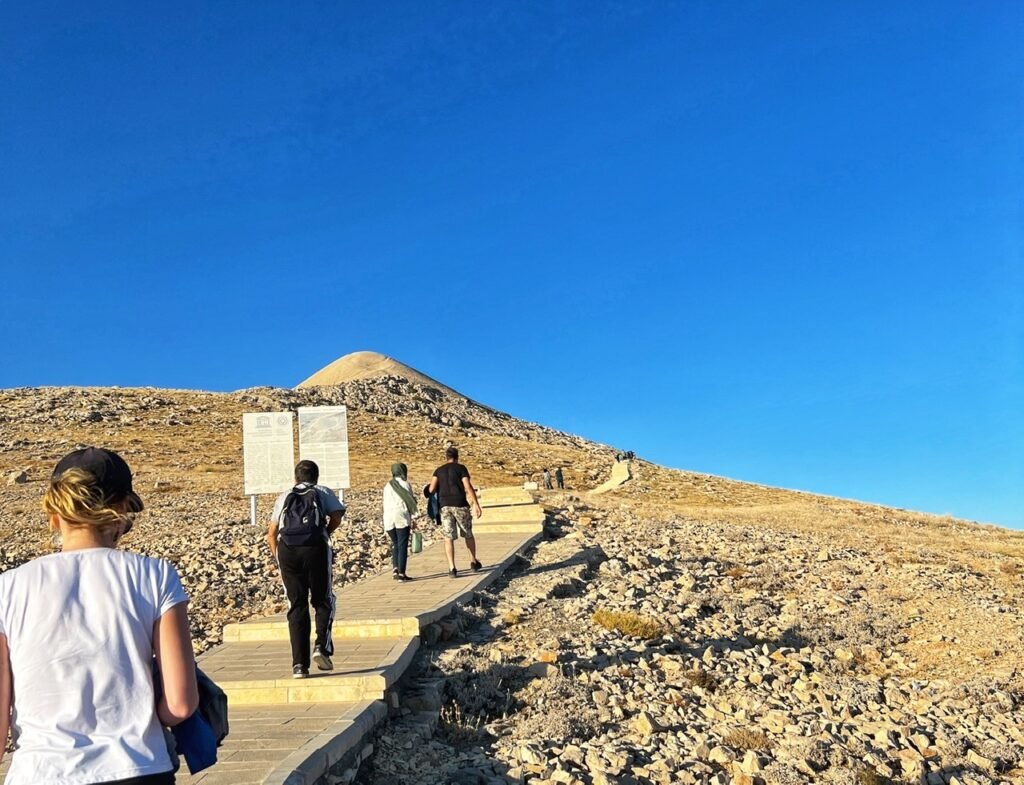
The huff up to the top of Mount Nemrut was a steady incline of stairs for about 30 minutes. In the beating summer late afternoon sun, it was still pretty intense. However, laughably we had been warned it would be cold so we each had multiple layers to drag along with us. Tours go either at sunrise or sunset and we obviously chose the latter option.

At middle is King Antiochus. As a ruler, King Antiochus was best known for trying to form a new religion to welcome everyone and decrease the possibility of conflict in his kingdom. The faces of Greek and Persian gods’ statues are facing to east and west which was another another attempt of Antiochus to converge both cultures. Seems like a decent guy. At right, Zeus.

Commagene goddess of fertility has lost the top part of head, as well as her nose and chin. Hope her babies pan our better than she.
Also, at back left the Lion. He represents the domination of the Kingdom of Commagene over the earth. He’d probably be a bit disappointed to know that people rarely know about this dynasty. It was formed as a result of Alexander the Great winning a war against Persians.
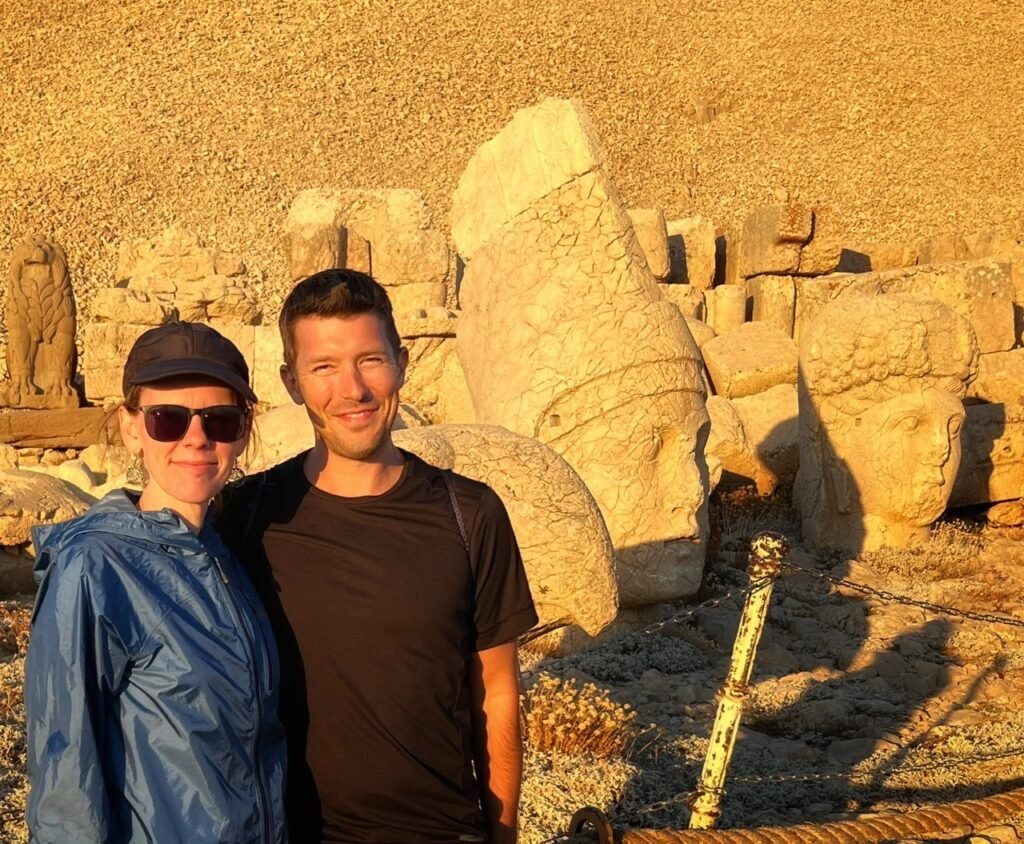
Mandy puts on her “respectful” serious face for a photo with the King.
The cluster of ancient ruins. Imagine the piles of McDonald’s and Starbucks tourists will be walking through in 2000 years…
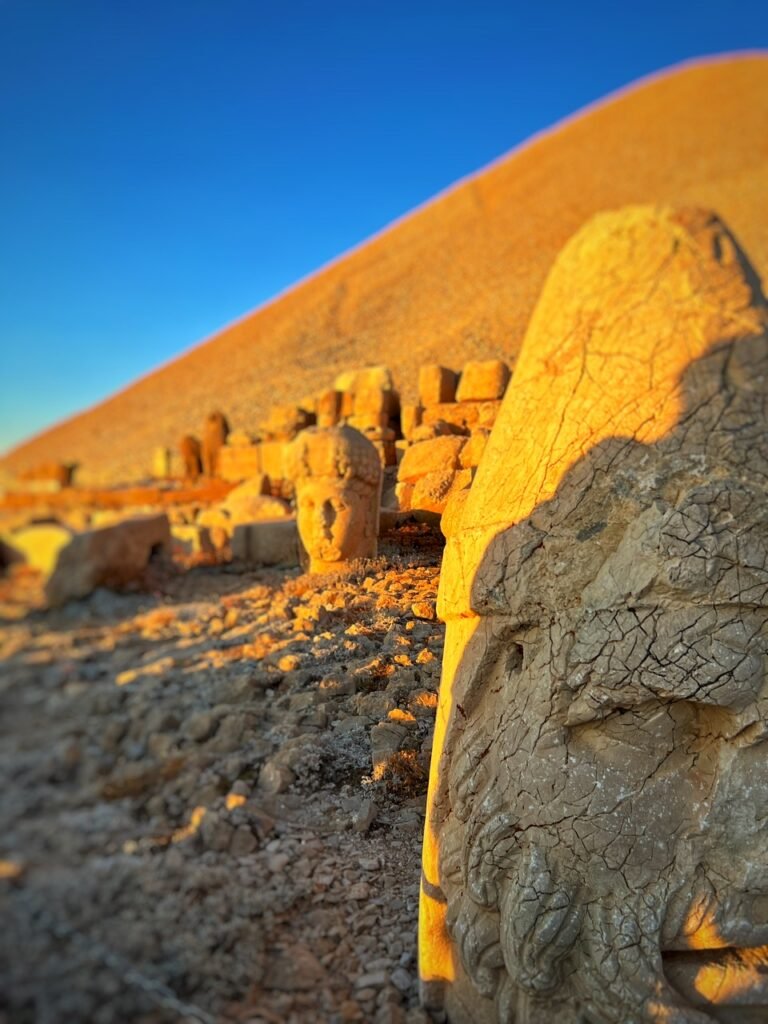
The top of 2150 meter mountain/burial mound is remarkably assembled with loose stone rocks/scree.
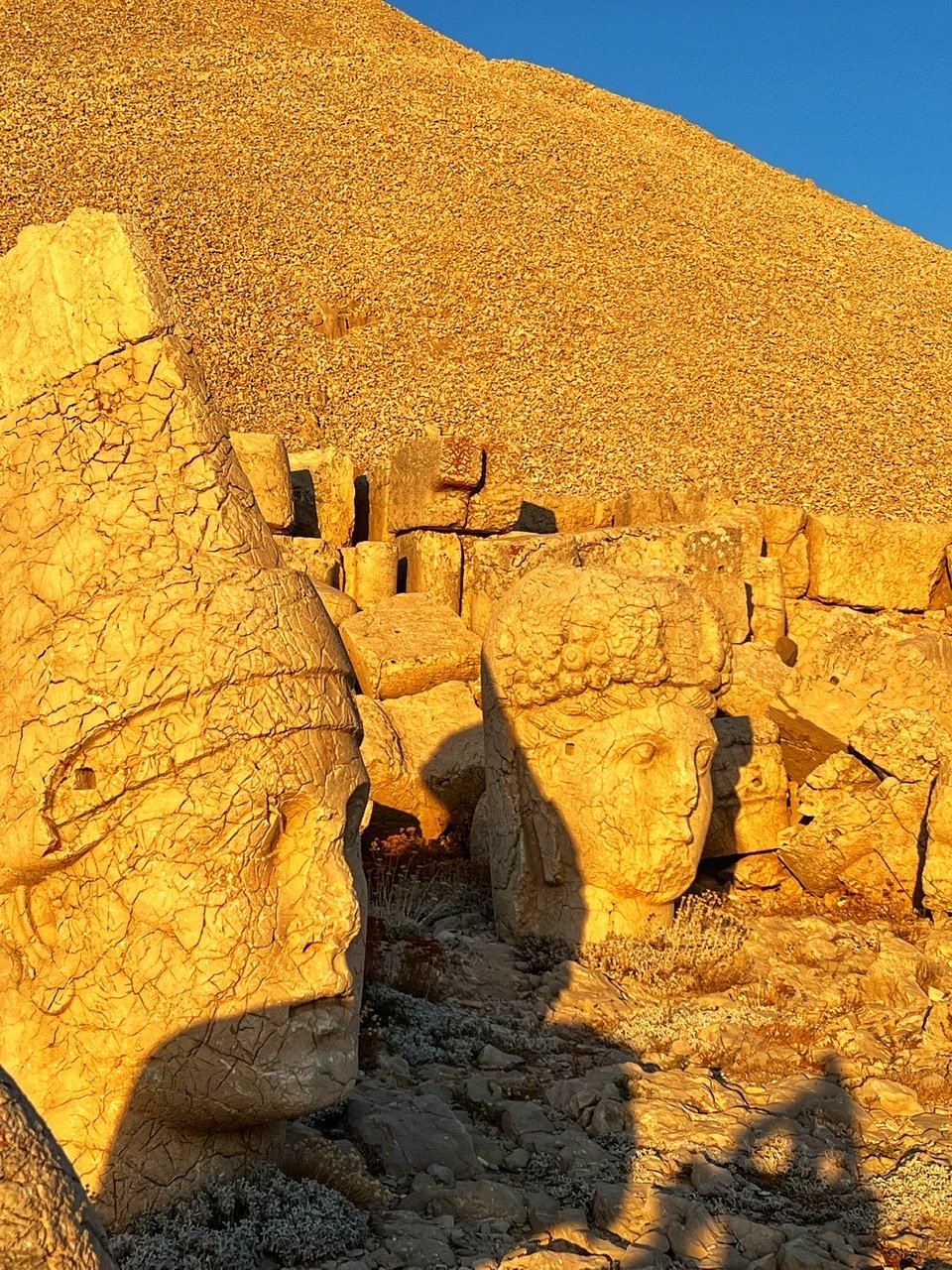
It was very tricky to get a shadowless photo this time of day!
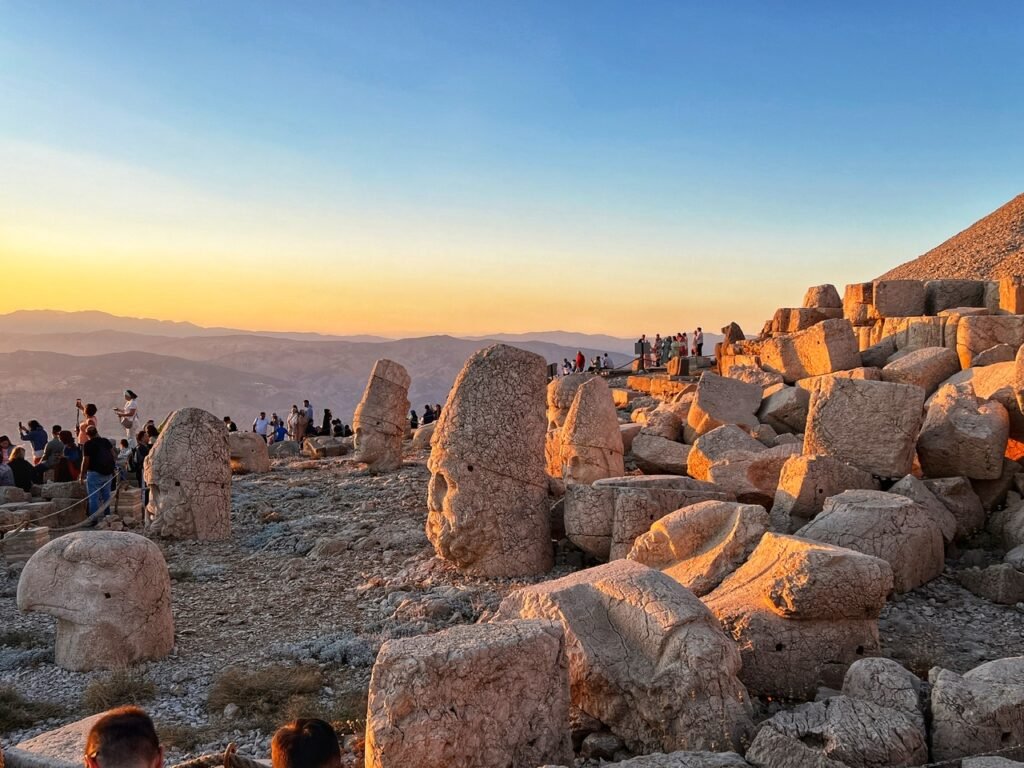
The cluster of ancient ruins. Imagine the piles of McDonald’s and Starbucks tourists will be walking through in 2000 years…probably searching for the King of Capitalism’s tomb.

But the best part of Nemrut for Mandy?! The stellar sunset and view from the top.


On the flip side, the east terrace, you can see the gargantuan bodies from which the heads toppled.
The Eagle figure was widely used in different mythologies, as a messenger of God, in addition to representing divine power.
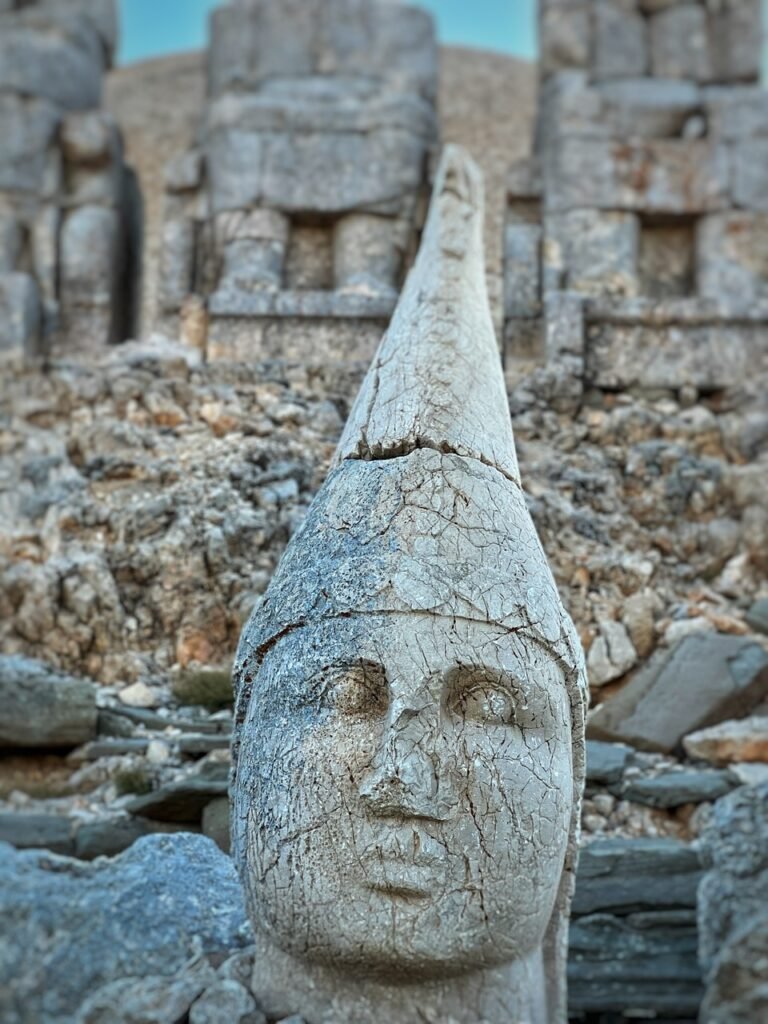
The east terrace depiction of King Antiochus. With that hat, he kinda looks like he just needs to go sit in a corner, or be given a Saturday Night Live skit…
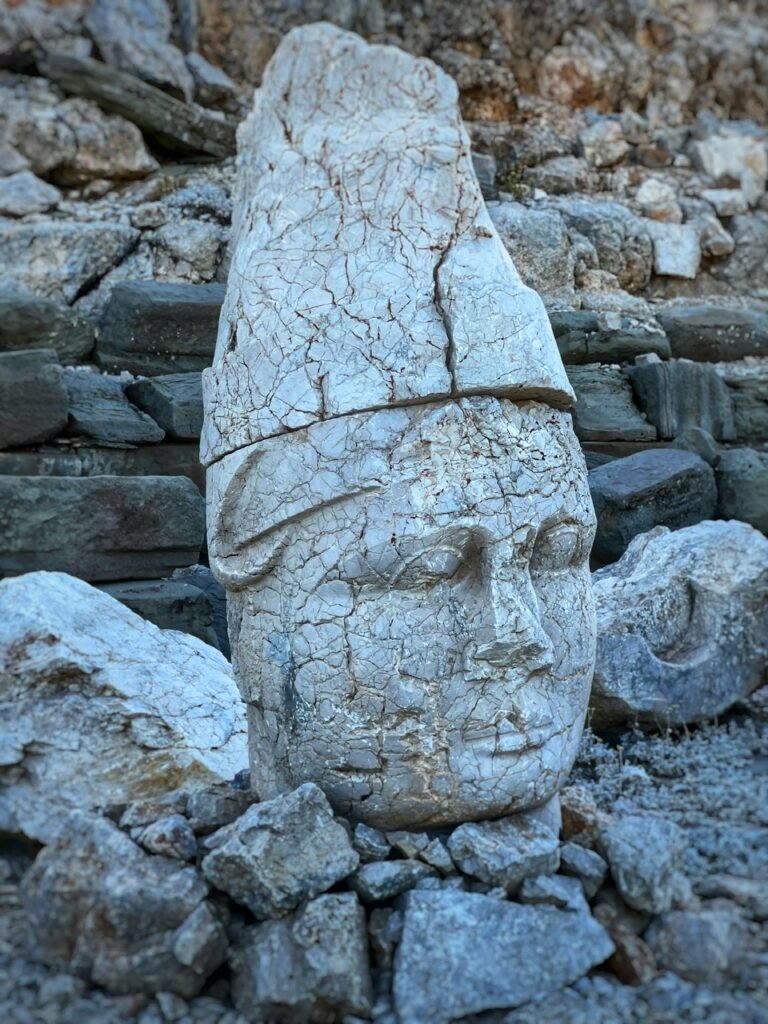
Apollo, son of Zeus in Greek mythology, represents wisdom and knowledge.

We couldn’t believe how many people were at the top. Although Nemrut is not too common for international tourism, it has a very active local tourist draw. As mentioned, we took an overpriced tour from our hotel and ended up paying a whopping 130€. Although we enjoyed the site itself, we were not at all happy how ripped off we got, so please don’t book with Kommagene Hotel! (See previous post!)

But what a view!
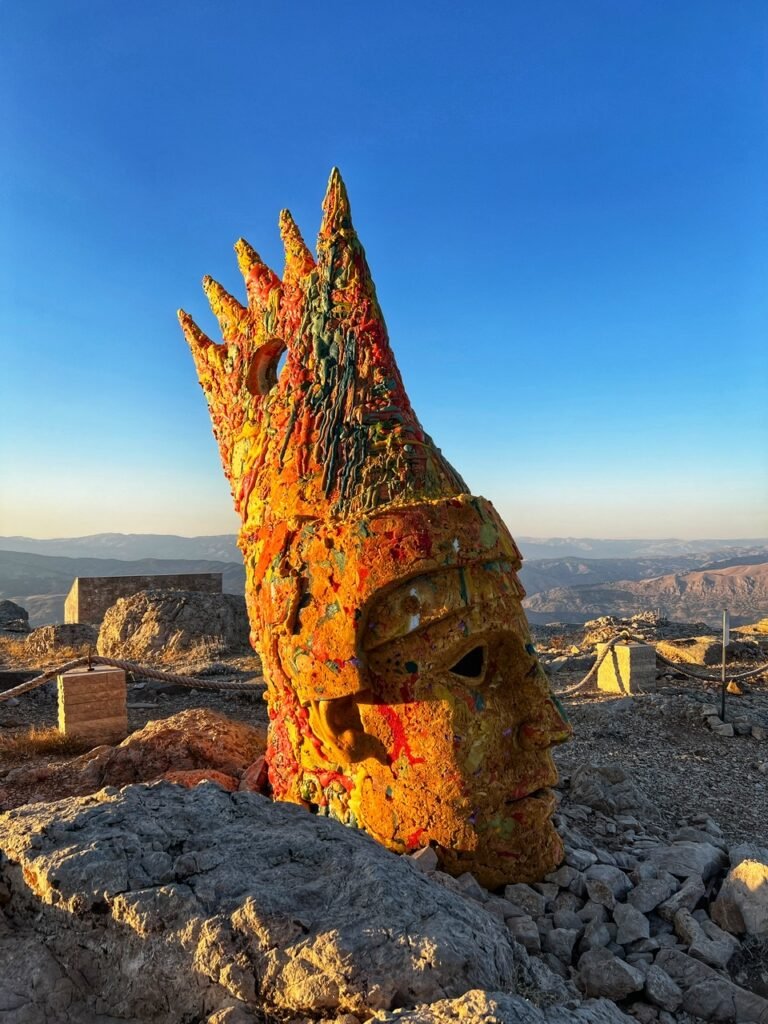
This little sparkler is not a real stone but what seems to be more of an art project made with foam and paints. Regardless, it was quite interesting on the north side.
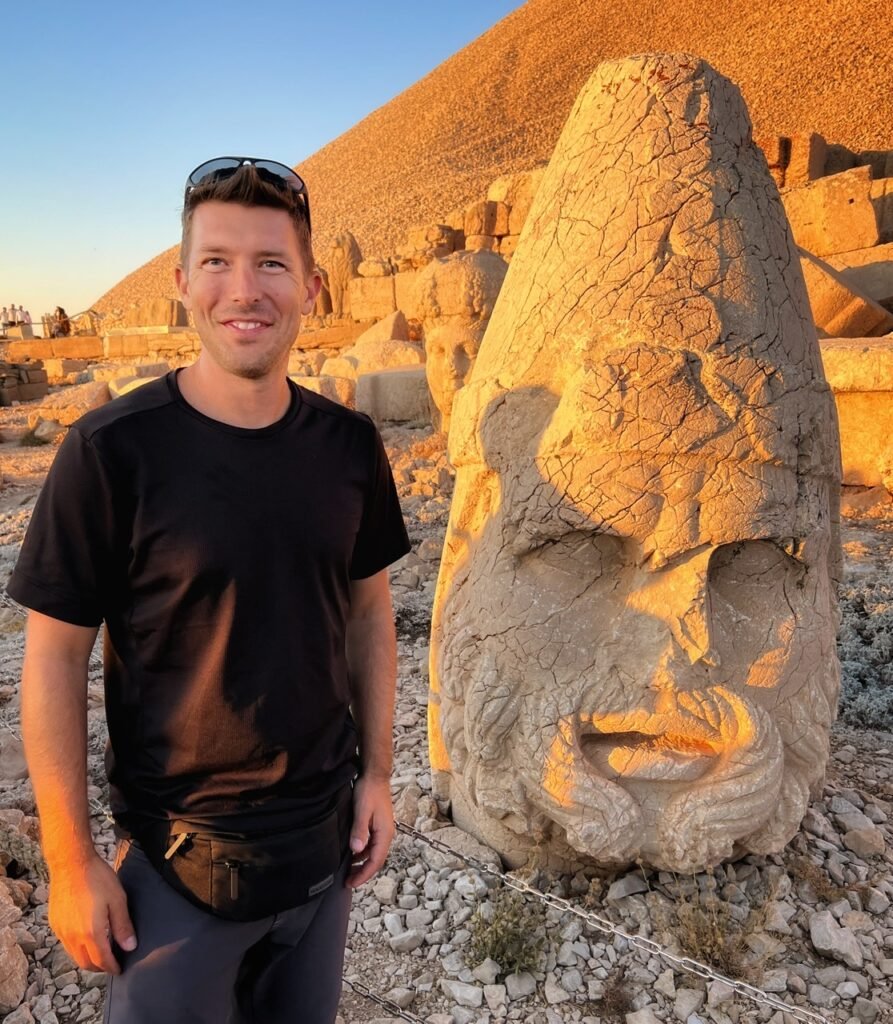
Gregory meets Zeus for the first time. If it weren’t for that cast-iron chain, he could even touch him!
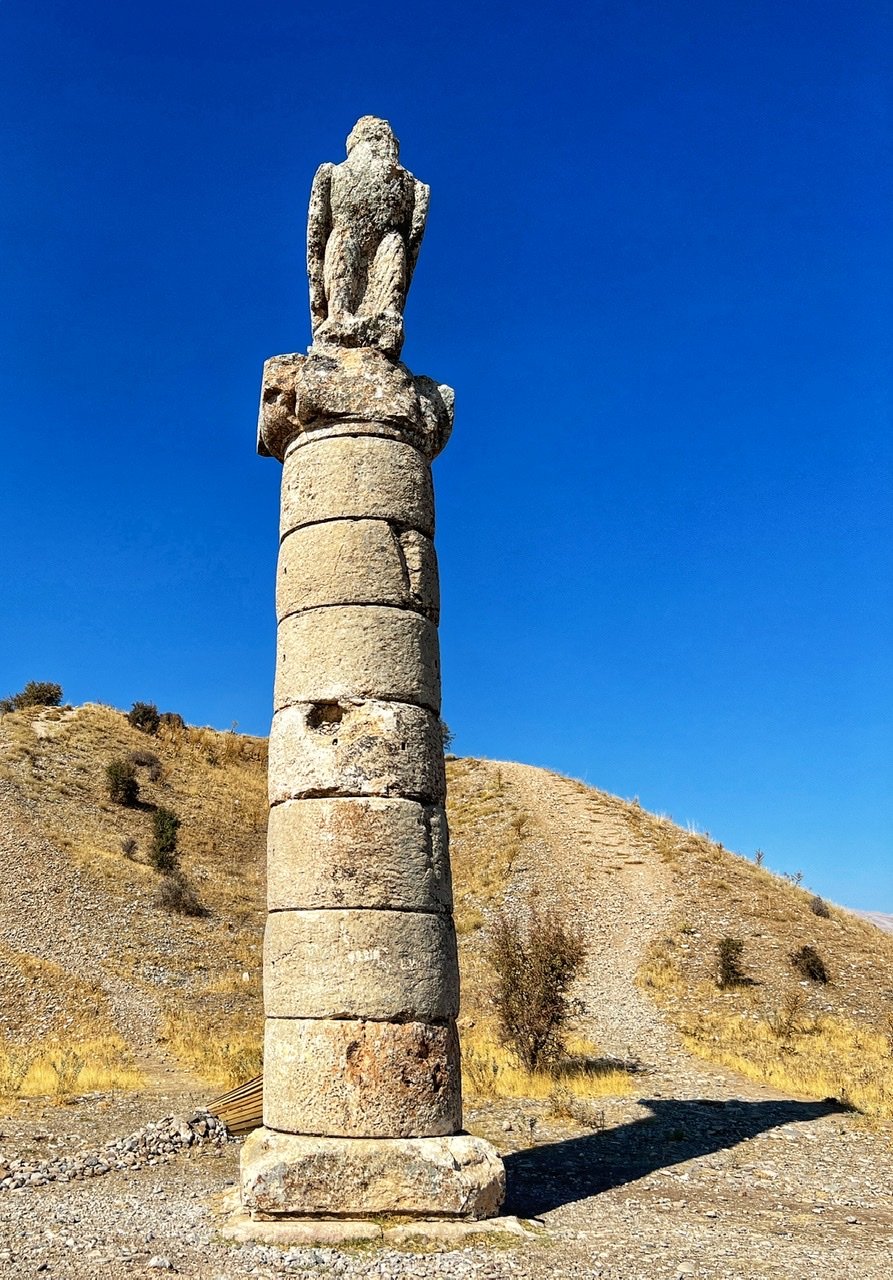
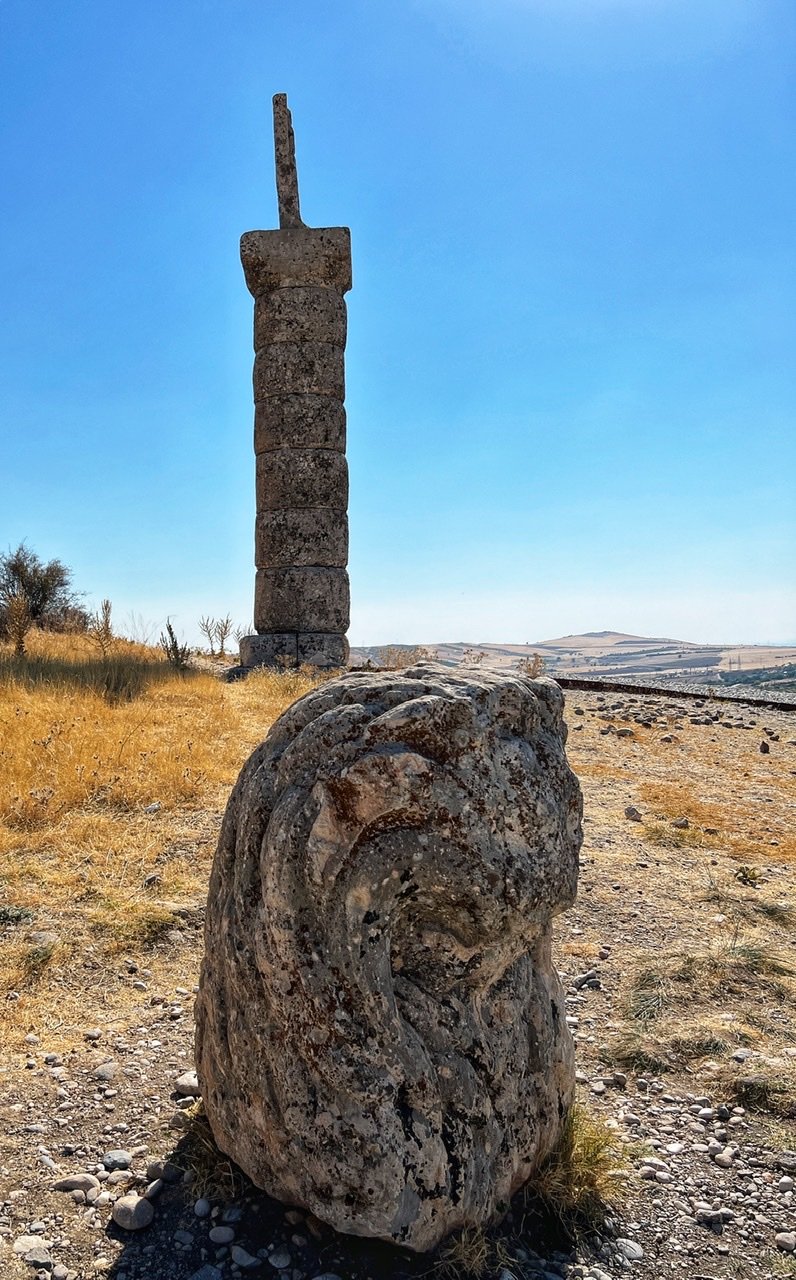

On the way up, we stopped at Karakuş Tümülüsü, which is a series of ancient columns built as a family plot by Mithridates II of Commagene in 30 BCE.
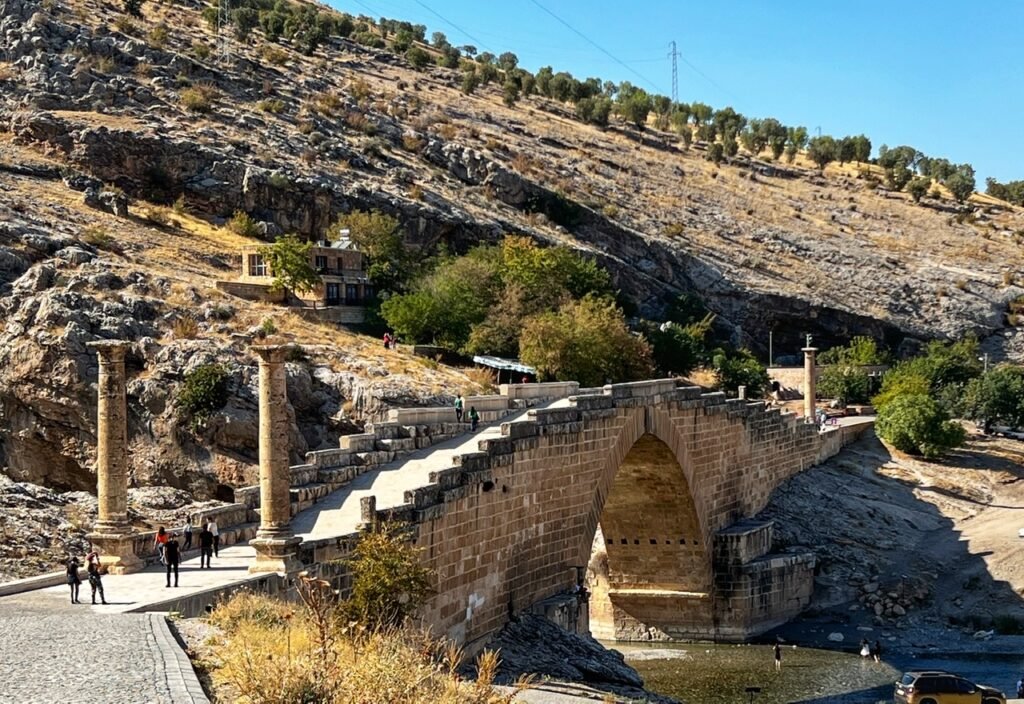
We also stopped at Severan Bridge, one of the oldest bridges in the world panning the Cendere River which was built in 200 BC. 3 of the 4 Corinthian columns are still standing. Apparently this bridge was used to start a war. So much for creating bridges for positive unity ?
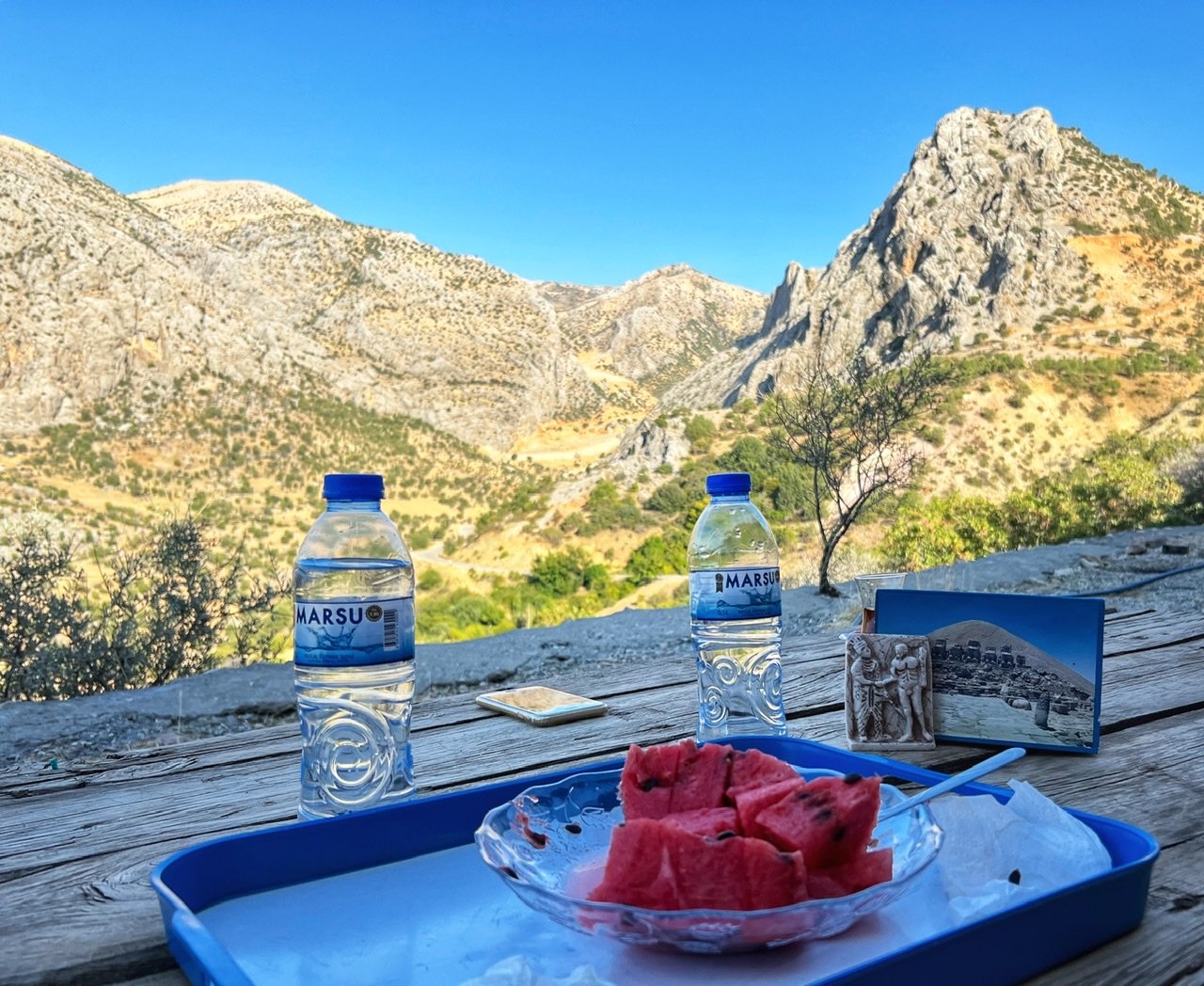
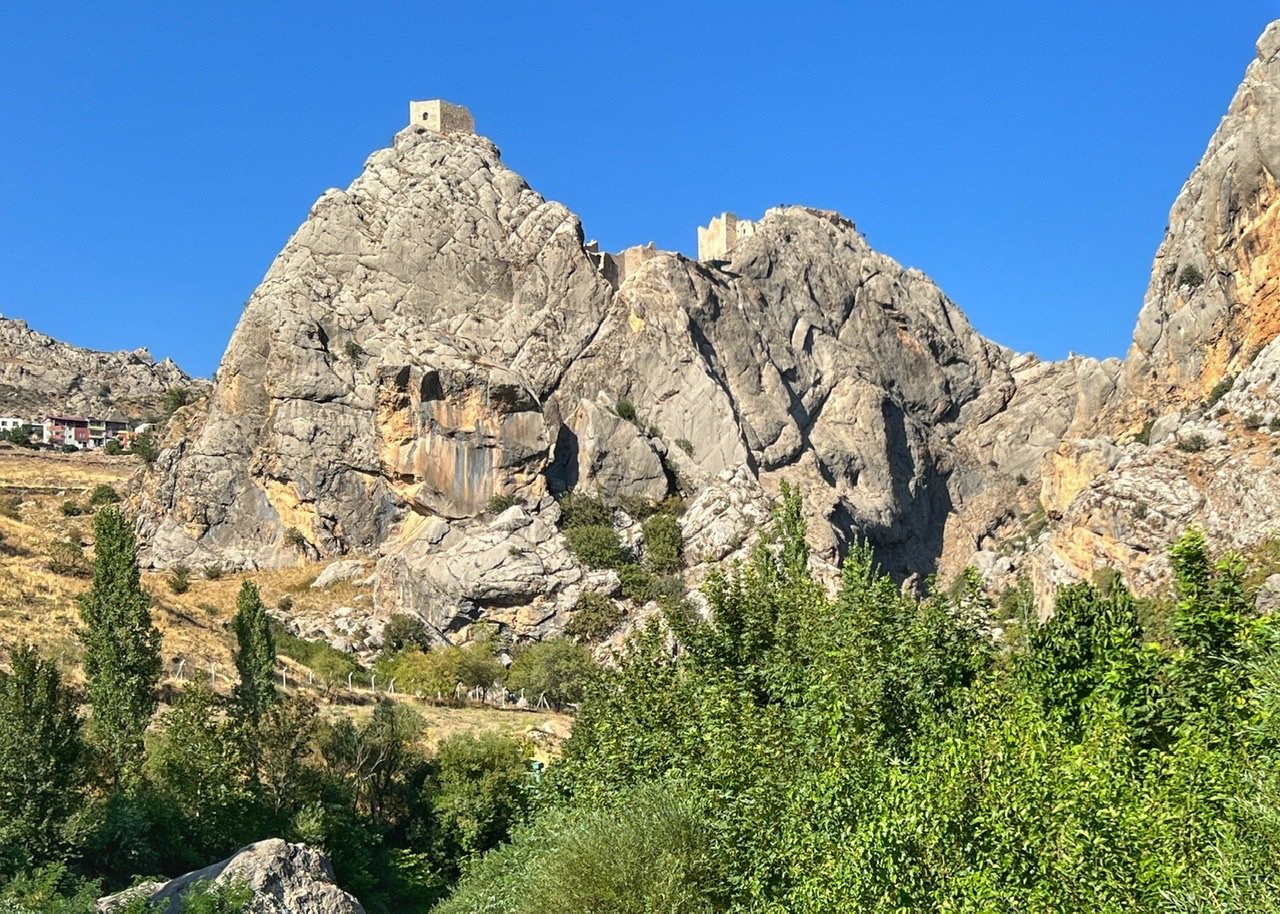
Another unseen part of the trip was Mandy struggling with a bit of heat exhaustion, further developed by the very nauseating and winding roads heading up (and down) the mountain. (Aka take DRAMAMINE!!) While the rest of the group visited another site, the local “mayor,” alongside Greg, sweetly took care of her by dousing her with cold water and eventually, some absolutely divine watermelon.



